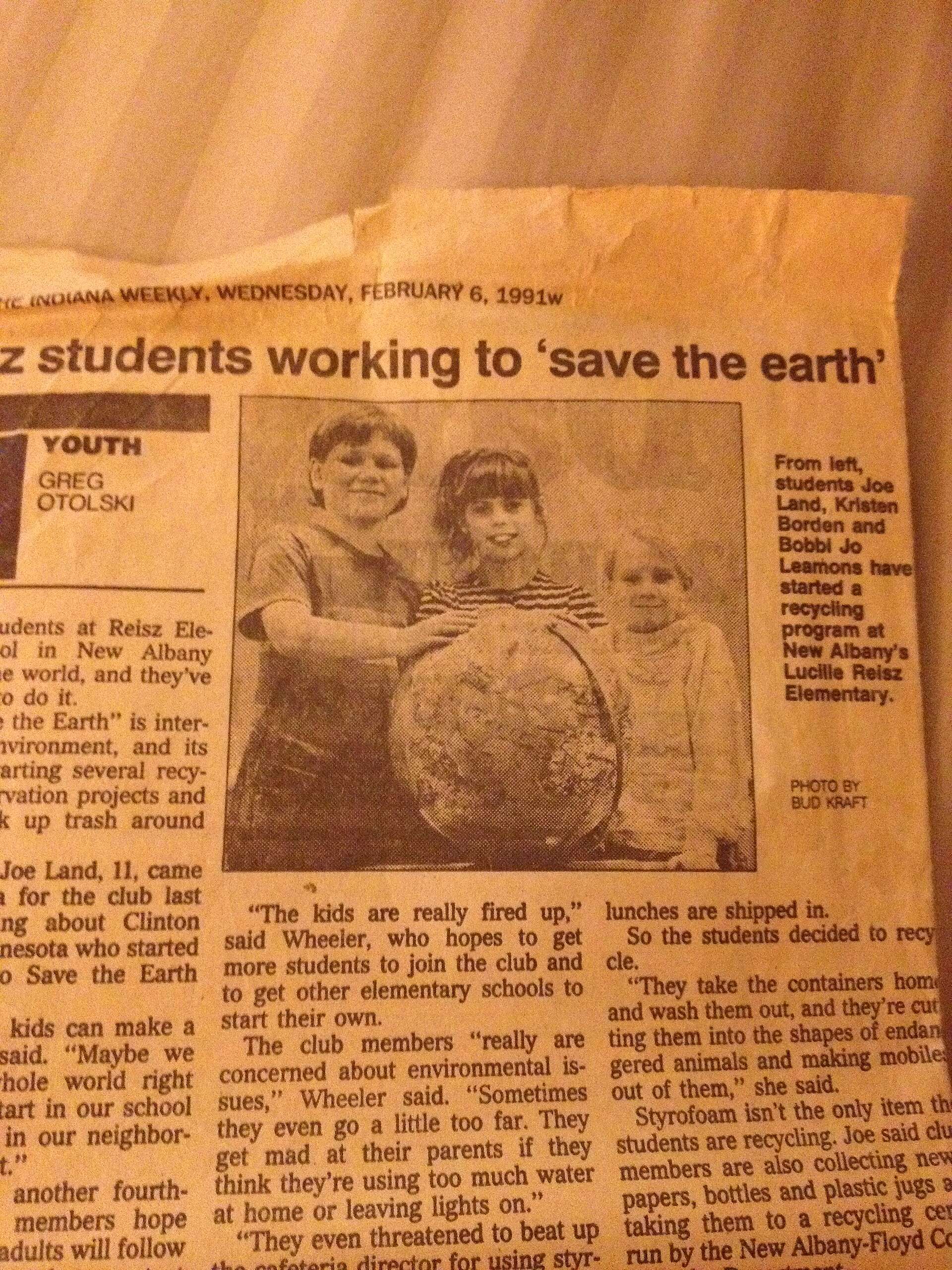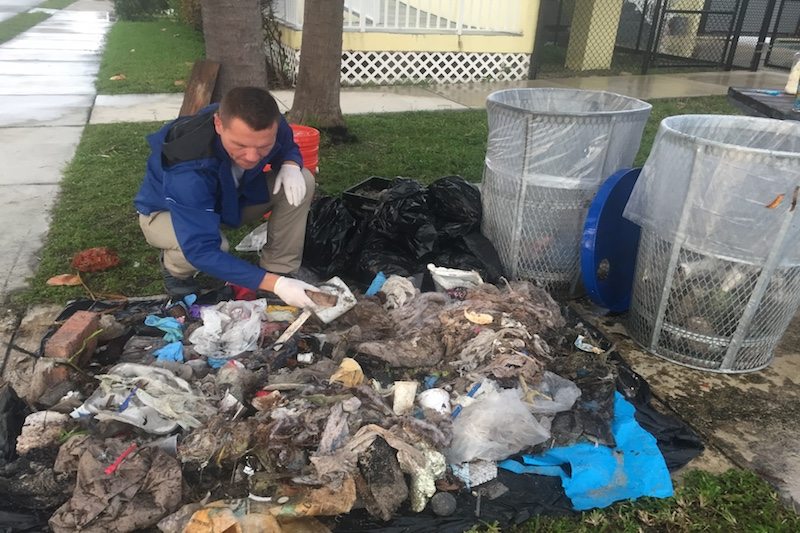My name is Joe Land and I’m a marine conservationist in Florida. I see firsthand the impacts of plastic pollution on the oceans and on sea turtles and other marine life. The problem is getting worse, but there is a lot we can do to fix it.
My passion for environmental conservation began when I was inspired by my 3rd-grade teacher to focus on my own interactions with the world around me, and to learn about the impact humans have on the Earth. I started the first Kids for Saving the Earth club in my hometown of New Albany, Indiana, where I became involved in sharing my enthusiasm for the natural beauty of the planet and in talking to people about the importance of protecting our only home. We worked on a recycling program and on stopping the use of Styrofoam in the school cafeteria.

A newspaper clipping from 1991 highlights Joe’s first foray into environmental activism as the founder Kids for Saving the Earth Club.
When I was 12, I took my first trip to Florida where I fell in love with the ocean and knew that’s where I belonged. When I first moved to Florida in the summer of 2007, I watched the release of sea turtle hatchlings, and I decided that I wanted to focus on their protection and coastal ecology. I became certified as an Advanced Florida Master Naturalist and Land Steward through the University of Florida; that program gave me the tools to understand and share the impact we have on Florida’s diverse marine and natural resources. Today I’m pursuing a degree in Marine and Environmental Science.
Through my experience working for various local organizations focused on sea turtle and marine conservation, I have been able to help teach others about the importance of our unique and fragile environments in South Florida and the crisis our oceans are facing. I have been involved in dune restorations; beach, ocean, and waterway cleanups; education; community outreach; and, most importantly, working directly in nest monitoring, surveys, and rescues of sea turtles and marine mammals.
The more time I spend on and near the water, the more I notice plastic and debris everywhere. Responding to sea turtle strandings and marine animal rescues, I see firsthand the impacts of humans, from plastic ingestion and fishing line entanglements to boat strikes and pollution. While snorkeling, I have seen juvenile green sea turtles mistake plastic bags for jellyfish and try to eat them. When I go out on a boat each day in my current job at a cleanup organization, I see fish skimming the water for food and actually see them eat microplastics and Styrofoam. During my travels, whether walking the beaches of Israel or teaching ocean conservation in the Bahamas, I have seen the global impact of our plastic dependency and the effects it is having on our oceans and marine life. We are drowning in our own plastic!

Joe found this Northern Gannet dead on the beach — recent research has suggested that over 90% of sea birds have ingested plastic.

Joe sorts through debris collected during a morning sea turtle nest survey.
Today I try to avoid plastic as much as I can. I carry a reusable water bottle. I bring my lunch to work in glass containers or in foil. If I do go out to eat, I ask for no straw in my drink and I ask for aluminum foil if I bring leftovers home. I use reusable bags when I shop, and I don’t use a bag at all if I’m only buying a few small items. When I’m in a pinch I will ask for a paper bag; this really makes the clerk curious and opens the door to educate. I try to buy fruits and veggies packed in cardboard or with no packaging at all; this is becoming more difficult to do as more and more things are wrapped in plastic, so now I remove the plastic packaging from my produce in the store and let the manager know why.
Trying to live a plastic-free life not only reduces my own plastic use but hopefully also inspires others to look at their own lifestyles and make changes. And we all need to stand together to hold the corporations that produce all of this excess plastic accountable.
It will take each of us to make the changes we need for our oceans and world to survive. We are all connected so we are all affected. No matter the challenges I face, I try to live by one of my favorite quotes from Gandhi: “Be the change you wish to see in the world.”

Joe educates local kids about marine pollution.
